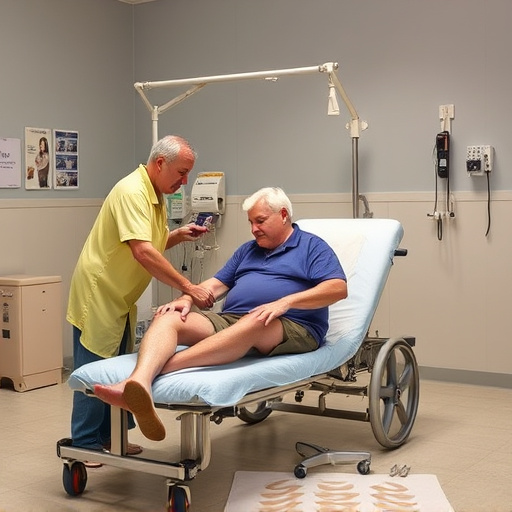Navigating spine injury workers comp claims demands understanding jurisdiction-specific legal documentation requirements. Essential evidence includes medical records, diagnostic imaging, treatment plans, employment history, witness statements, and rehabilitation details. Proper documentation is vital for a successful claim that supports recovery from conditions like herniated discs or pinched nerves. After filing, expect an acknowledgment from the board, involving comprehensive medical record gathering for claim proof. Regular updates from healthcare providers and insurers are crucial for alignment throughout evaluations and negotiations.
Legal Documentation for Spine Injury Workers’ Comp Claims
Suffering from a spine injury at work? Navigating the workers’ compensation process can be complex, especially when dealing with severe injuries. This article guides you through the legal aspects of filing a claim for a spine injury-related workers’ comp. We’ll explore the essential requirements and documents needed to ensure your claim’s success. From understanding the basics to navigating post-filing procedures, get ready to empower yourself with knowledge in this often-daunting process, specifically tailored to spine injury cases.
- Understanding Spine Injury Workers Comp Requirements
- Essential Legal Documents for Your Claim
- Navigating the Process: What to Expect After Filing
Understanding Spine Injury Workers Comp Requirements

When navigating a spine injury workers comp claim, understanding the legal documentation requirements is crucial for a successful outcome. Each jurisdiction has specific guidelines governing what constitutes acceptable evidence for musculoskeletal injuries, especially those affecting the spine. These regulations aim to ensure fairness and accuracy in compensating workers for injuries sustained on the job.
The process involves submitting comprehensive medical records, including diagnostic imaging reports, treatment plans, and progress notes from healthcare providers. Additionally, employment history details, witness statements, and incident reports are essential components of a robust claim. For severe cases, therapeutic exercises or shockwave therapy may be recommended as part of the rehabilitation process, and these treatments should also be documented to support the claim.
Essential Legal Documents for Your Claim

When filing a claim for spine injury workers comp, it’s crucial to gather essential legal documents that support your case. These include medical records detailing your diagnosis, treatment history, and any procedures performed, along with images like X-rays or MRIs that illustrate the extent of your injuries. A comprehensive report from your treating physician, outlining the nature of your spine injury and its relationship to your workplace incident, is paramount.
Additionally, you’ll need a detailed account of your work history, including job descriptions and any relevant safety training records. Statements from witnesses who can corroborate the circumstances leading to your injury are also invaluable. These documents collectively form the backbone of your claim, aiming to secure personalized treatment plans for conditions such as herniated discs or pinched nerves, ensuring you receive the care necessary for a full recovery.
Navigating the Process: What to Expect After Filing

After filing a claim for spine injury workers comp, it’s natural to feel a mix of anticipation and uncertainty about what comes next. The process can seem daunting, but understanding the steps ahead helps reduce anxiety. Initially, you’ll likely receive an acknowledgment from the workers’ compensation board, confirming your claim is under review. This is when the journey begins—a meticulous navigation through medical evaluations, legal documentation, and potential negotiations.
The focus shifts to gathering comprehensive medical records, including imaging reports, treatment plans, and doctor’s notes, especially those related to lower back pain or whiplash treatment. These documents are crucial in supporting your claim and demonstrating the extent of your injuries, which may also include joint pain relief measures. Expect regular updates and communications from both your healthcare providers and the workers’ comp insurance carrier, ensuring all parties involved stay aligned throughout the process.
When filing a claim for a spine injury under workers’ comp, understanding the legal requirements and gathering essential documentation are crucial steps. By ensuring you have all the necessary papers, such as medical records, incident reports, and witness statements, you can navigate the process smoothly. Remember to stay informed about deadlines and keep open communication with your employer and insurance providers. With careful attention to detail and proper documentation, you’re one step closer to receiving the compensation and support needed for a successful recovery.














